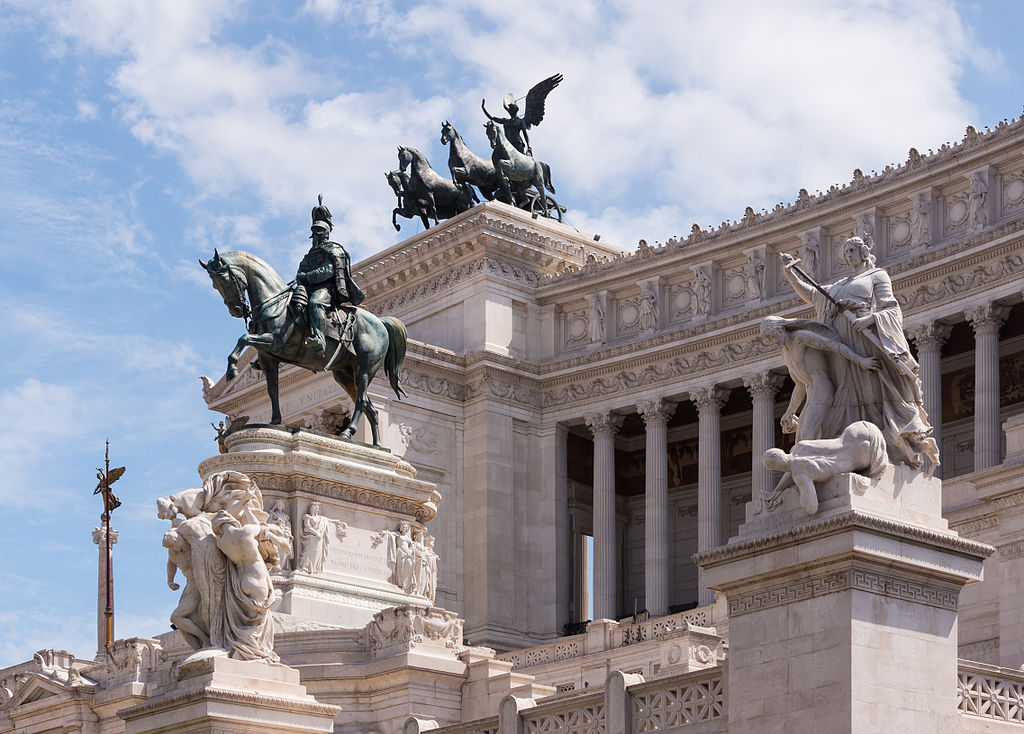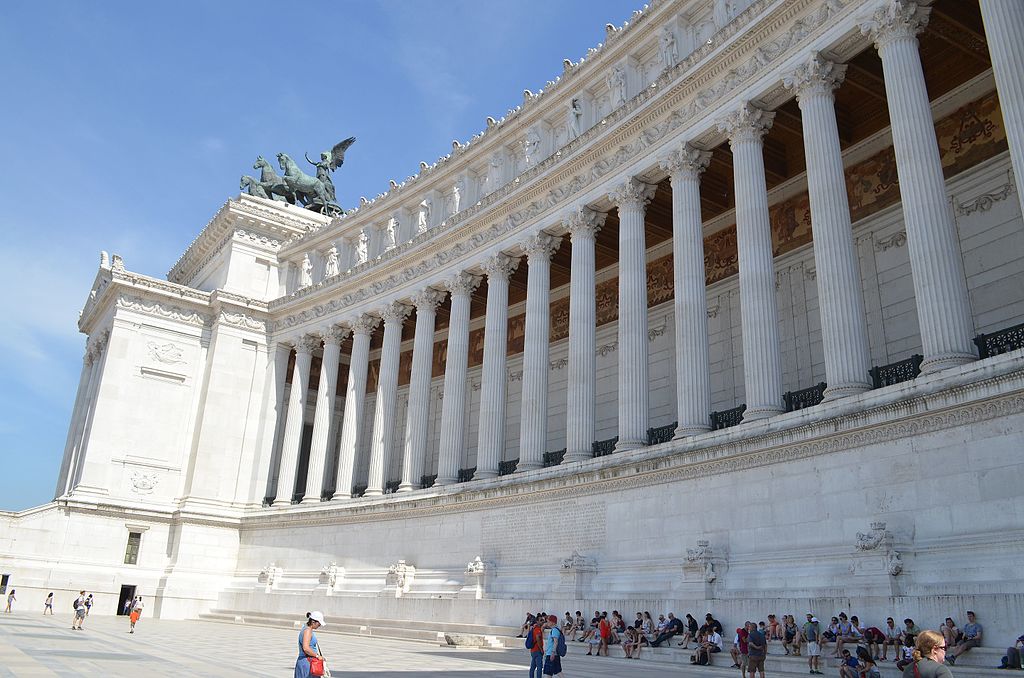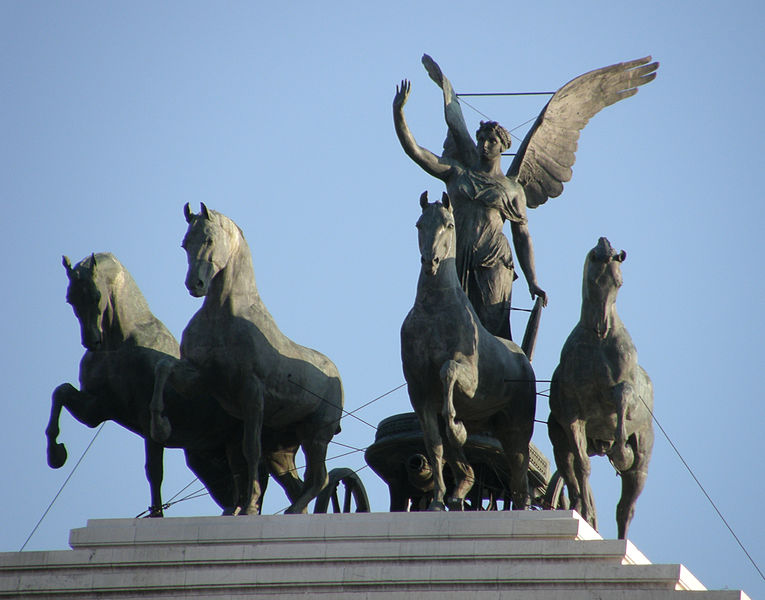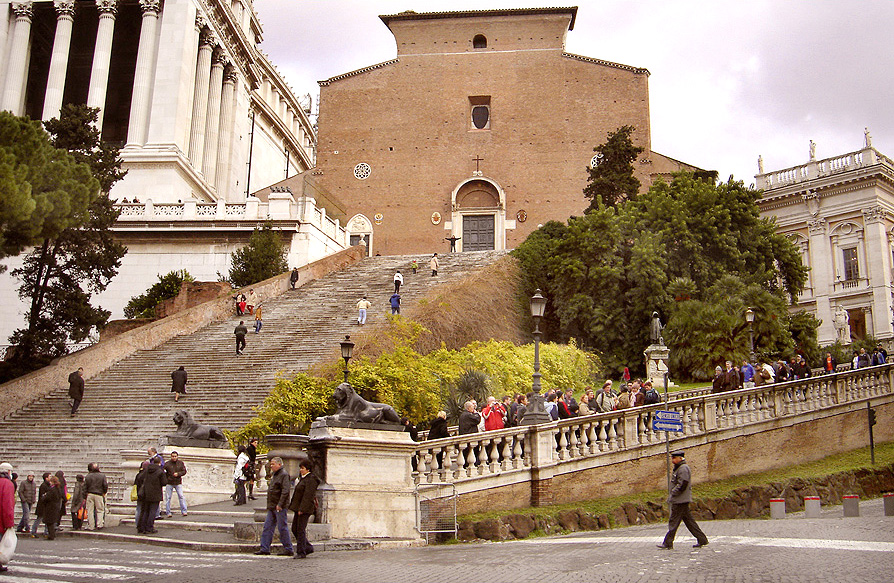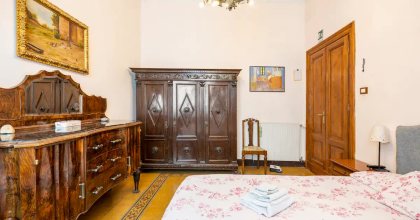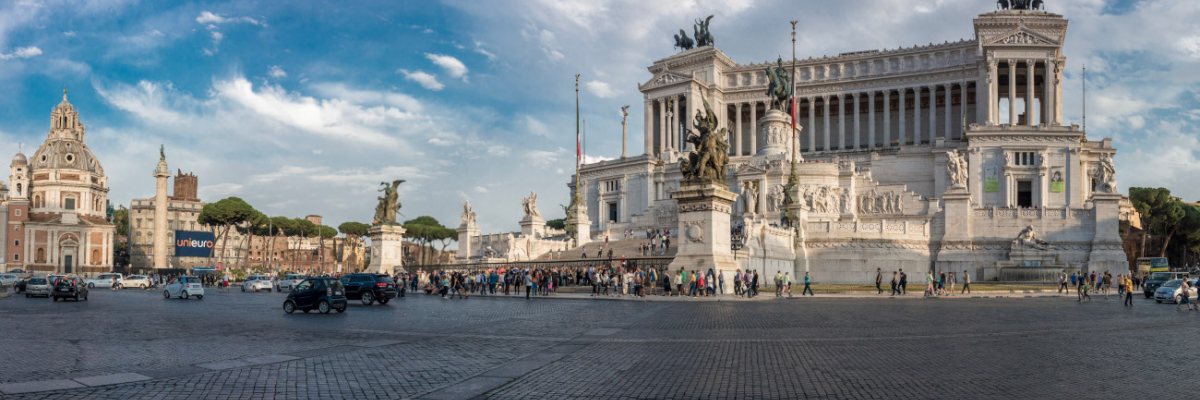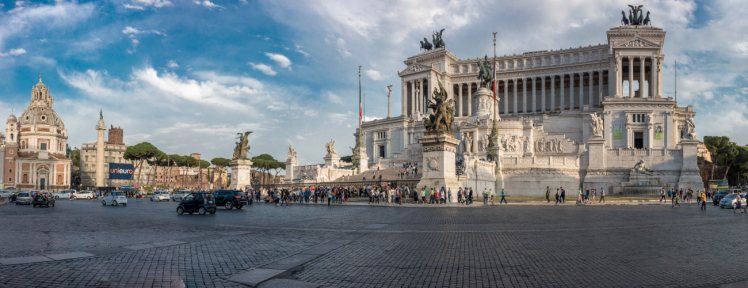
The Vittoriano is dedicated to Vittorio Emanuele II and takes its name from him. When the first King of Italy died of pneumonia on January 9, 1878 at just 57 years of age, the whole nation was crossed by a deep condolence.
In that climate of exceptional collective participation, the City Council of Rome decided to erect a monument by allocating the sum of one hundred thousand lire for this in the session of 10 January 1878.
The statue of Vittorio Emanuele II is the pivot of the monument. It was made by casting 50 tons of bronze, obtained from cast cannons. The dimensions are gigantic: 10 meters long and 12 meters high. Fourteen Italian cities act as a pedestal for the statue; the cities represented are: Genoa, Milan, Bologna, Ferrara, Pisa, Mantua, Urbino, Palermo, Florence, Turin, Ravenna, Amalfi, Naples, Venice.
The equestrian statue of Vittorio Emanuele II acts as a backdrop for the portico with a length of about 75 meters, on which sixteen statues representing the sixteen Italian regions of the late 19th century are carved. The statues are 3.5 meters high. The regions represented are: Piedmont, Lombardy, Veneto, Liguria, Emilia-Romagna, Tuscany, Marche, Umbria, Lazio, Abruzzo, Campania, Puglia, Basilicata, Sicily, Calabria and Sardinia. The creation of the statues was entrusted to a sculptor from each region.
The quadrighe, placed in 1927, bring the Vittoriano to the maximum height of 81 meters. They represent Unity and Liberty and are the result of the work of two different sculptors: Carlo Fontana and Carlo Bartolini.
The statue of the goddess Roma is inspired by the effigy of Minerva. It is the work of the sculptor of Brescia origins Angelo Zanelli, who worked on the sketch of the frieze for 15 days.
